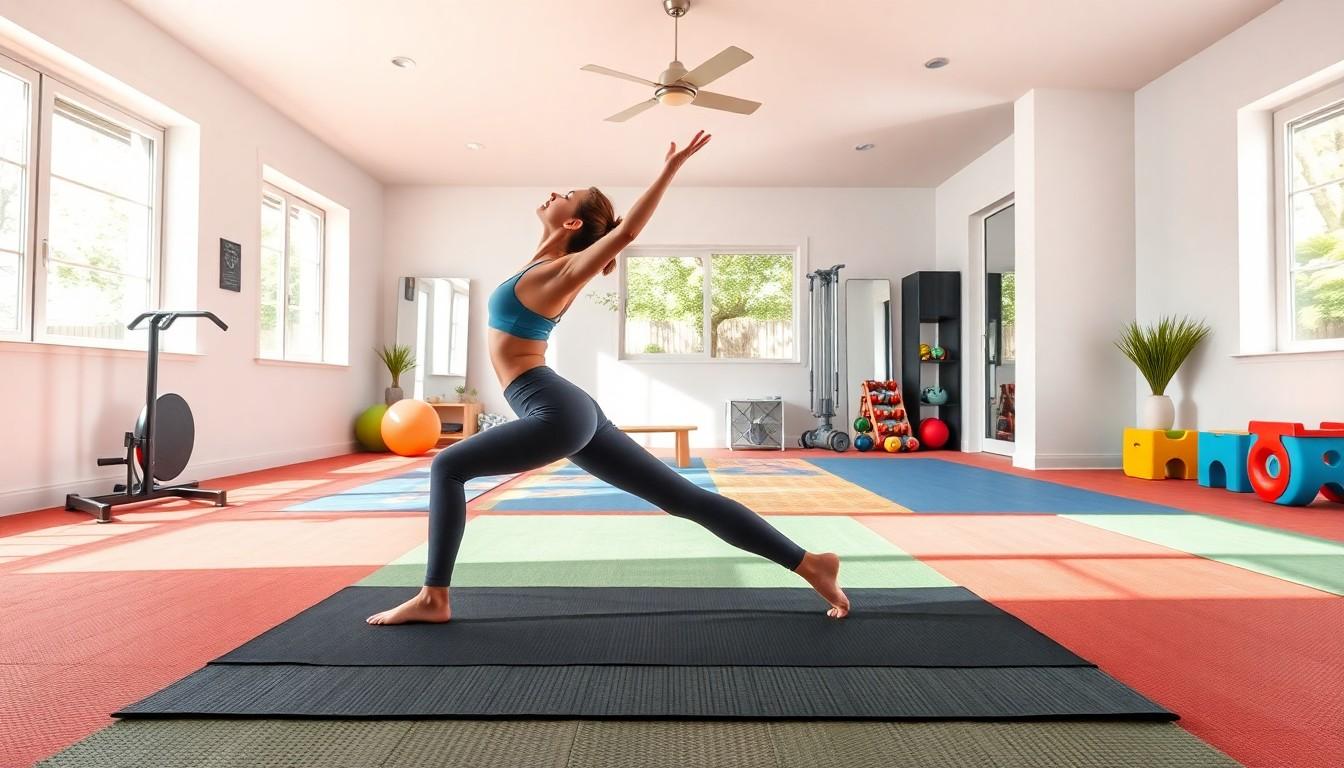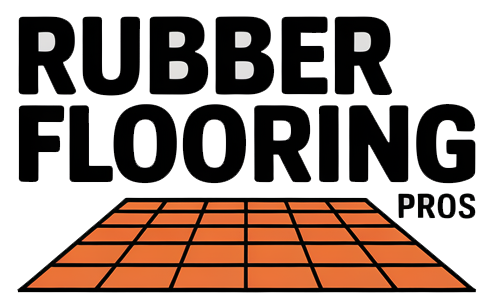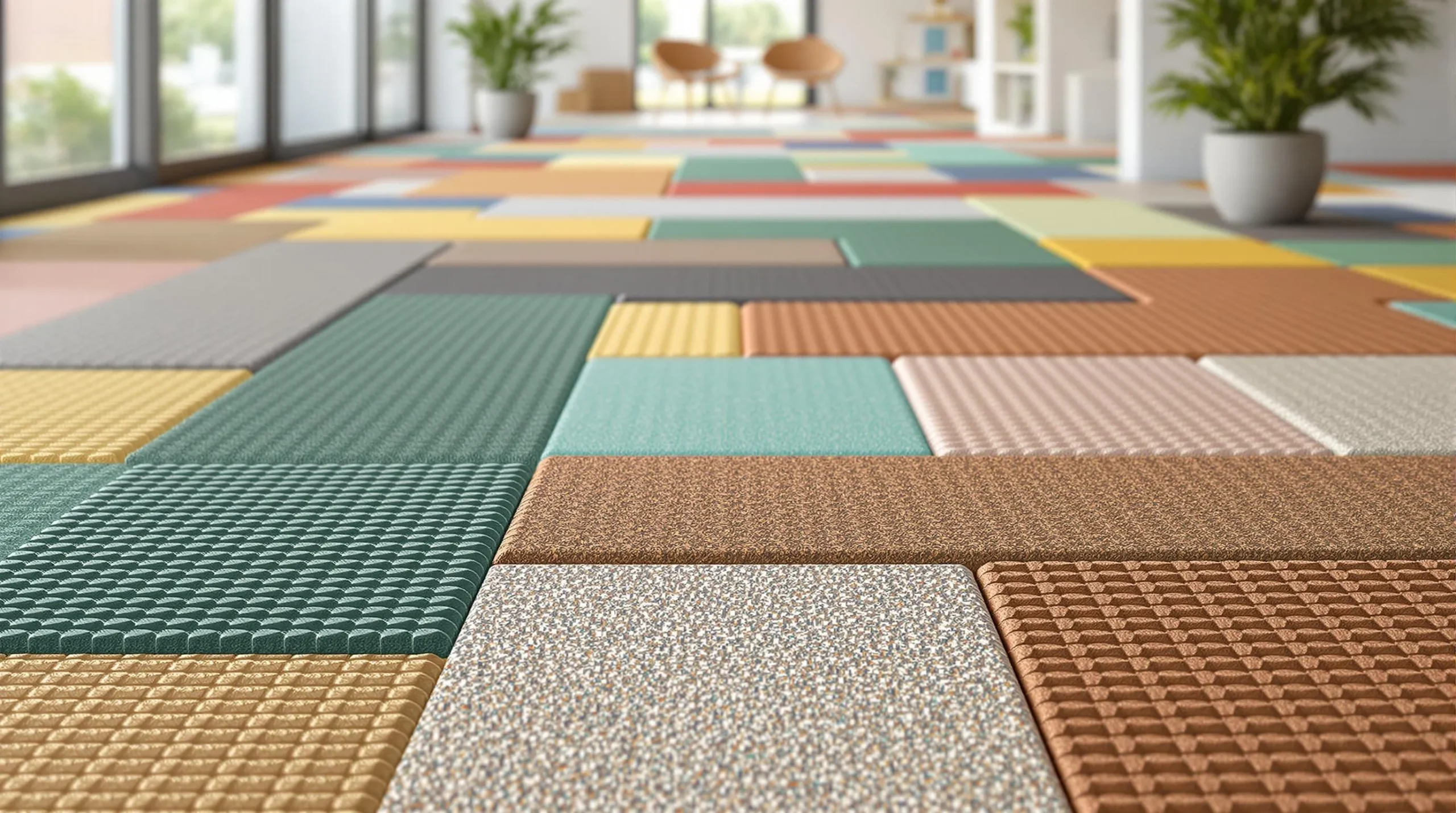When you’re looking to upgrade your home’s flooring, rubber might not be the first material that springs to mind. Yet this versatile option has quietly revolutionised domestic spaces with its perfect blend of durability, comfort and style. From home gyms to children’s playrooms rubber flooring offers practical solutions that traditional materials simply can’t match.
You’ll find that modern rubber flooring has evolved far beyond its industrial roots. Today’s options come in an impressive array of colours patterns and textures making it a sophisticated choice for contemporary homes. What’s more it’s incredibly easy to maintain and can last for decades with proper care making it a smart long-term investment for your living space.
Key Takeaways
- Modern rubber flooring combines durability and style, offering a versatile solution for contemporary homes with a lifespan of 15-20 years when properly maintained.
- The material consists of three primary layers (wear, core, and base) and comes in various formats including sheets, tiles, and panels with thicknesses ranging from 2mm to 8mm.
- Ideal for home gyms, children’s playrooms, and utility areas, rubber flooring provides excellent shock absorption, sound reduction (up to 18 decibels), and anti-slip properties.
- Installation can be performed professionally or DIY, with proper maintenance requiring daily sweeping, weekly mopping, and monthly deep cleaning using pH-neutral cleaners.
- Though initial costs range from £25-85 per square metre, rubber flooring offers long-term value through reduced maintenance costs and enhanced property value.
Understanding Domestic Rubber Flooring
Domestic rubber flooring combines natural rubber compounds synthetic materials to create durable surfaces for residential spaces. The versatility of rubber flooring makes it suitable for multiple areas in your home, from fitness rooms to children’s spaces.
Key Components and Materials
Modern rubber flooring consists of three primary layers:
- Wear layer: A protective top coating that resists scuffs marks
- Core layer: Compressed rubber materials providing cushioning support
- Base layer: A stabilising foundation that ensures proper installation
The composition includes:
| Material | Percentage | Purpose |
|---|---|---|
| Natural rubber | 40-60% | Flexibility and resilience |
| EPDM | 20-30% | UV resistance and colour retention |
| Fillers | 10-20% | Strength and durability |
| Additives | 5-10% | Anti-slip and antimicrobial properties |
Common Types and Styles
Rubber flooring options for homes include:
- Sheet rubber: Seamless coverage in rolls of 1.2m-1.8m width
- Rubber tiles: Interlocking squares in 50cm x 50cm dimensions
- Rubber panels: Large format pieces with decorative patterns
Available design features:
- Textured surfaces: Studded hammered or ribbed patterns
- Colour variations: Solid tones speckled designs marbled effects
- Thickness options: 2mm-8mm for different applications
- Edge treatments: Straight bevelled or interlocking systems
| Type | Best Used For | Thickness |
|---|---|---|
| Standard | Living areas | 2-3mm |
| Athletic | Home gyms | 4-6mm |
| Safety | Children’s rooms | 6-8mm |
| Designer | Feature spaces | 3-4mm |
Benefits of Rubber Flooring in the Home

Rubber flooring offers distinct advantages for residential spaces through its unique composition and engineering. The material’s versatile properties create practical solutions for various home environments, from busy kitchens to home gymnasiums.
Durability and Longevity
Rubber flooring maintains its structural integrity for 15-20 years with proper maintenance. The material resists:
- Scratches from furniture movement or pet claws
- Dents from heavy equipment or dropped items
- Stains from spills or chemical exposure
- Wear patterns in high-traffic areas
- Impact damage from falling objects
The surface retains its appearance through:
- Colour stability against UV exposure
- Shape retention under heavy loads
- Waterproof properties preventing warping
- Chemical resistance to cleaning products
- Temperature fluctuation tolerance
Comfort and Safety Features
Rubber flooring provides ergonomic benefits through its inherent material properties:
- Cushioning effect reduces joint stress by 15-20%
- Anti-slip surface texture with 0.6 coefficient of friction
- Sound absorption up to 18 decibels
- Temperature stability between 15-30°C
- Shock absorption rate of 25-35%
- Fire-resistant properties meeting Class 1 standards
- Anti-static qualities preventing electrical discharge
- Antimicrobial protection against bacteria growth
- Non-toxic materials safe for children & pets
- Impact absorption protecting against falls
| Safety Feature | Measurement |
|---|---|
| Slip Resistance | 0.6 COF |
| Sound Reduction | 18 dB |
| Impact Absorption | 25-35% |
| Temperature Range | 15-30°C |
| Lifespan | 15-20 years |
Best Rooms for Rubber Flooring Installation

Rubber flooring enhances specific areas in your home where durability, safety, and comfort are essential. Here’s a detailed look at the most suitable spaces for rubber flooring installation.
Home Gyms and Exercise Areas
Rubber flooring transforms home gyms into professional-grade workout spaces. The 8mm to 12mm thick rubber surfaces absorb impact from dropped weights, exercise equipment, and high-intensity movements. The non-slip texture prevents accidents during workouts, while the shock-absorbing properties protect your joints during cardio exercises, weightlifting, or yoga practice.
Key features for gym installations:
- Interlocking tiles for quick layout changes
- Impact resistance for weight zones
- Moisture-resistant surface for sweat protection
- Sound dampening for jumping exercises
- Anti-fatigue properties for extended workouts
Children’s Play Spaces
Children’s rooms benefit from rubber flooring’s safety features and resilient nature. The cushioned surface reduces injury risks from falls, while the antimicrobial properties prevent bacteria growth in play areas.
Optimal characteristics for playrooms:
- Bright colour options for creative spaces
- Seamless installation to prevent tripping
- Stain-resistant surface for art activities
- Easy-clean properties for spills
- Soft texture for crawling toddlers
Utility Areas and Garages
Rubber flooring excels in high-traffic utility spaces where durability meets practicality. The chemical-resistant surface protects against oil spills, cleaning solutions, and automotive fluids in garages.
- Heavy-duty thickness of 12mm-15mm
- Chemical resistance for workshops
- Load-bearing capacity for storage areas
- Anti-static properties for tool safety
- Thermal insulation from concrete floors
| Area Type | Recommended Thickness | Key Benefits |
|---|---|---|
| Home Gym | 8-12mm | Impact absorption, sound reduction |
| Playroom | 6-8mm | Safety cushioning, easy maintenance |
| Garage | 12-15mm | Chemical resistance, load bearing |
Installation and Maintenance Guide
Proper installation and regular maintenance ensure domestic rubber flooring maintains its durability and appearance. The installation process varies based on the type of rubber flooring selected while maintenance routines protect your investment.
Professional vs DIY Installation
Professional installation provides precise fitting and proper adhesive application for rubber flooring. The installation process includes:
- Subfloor preparation: Levelling uneven surfaces removing debris protecting against moisture
- Accurate measurements: Calculating exact dimensions accounting for doorways corners waste factors
- Adhesive application: Using manufacturer-recommended adhesives following specific temperature humidity guidelines
- Edge sealing: Applying proper sealants preventing moisture penetration maintaining appearance
DIY installation suits experienced homeowners with basic tools knowledge:
- Required tools: Utility knife straight edge measuring tape adhesive trowel
- Installation steps: Acclimating materials cutting pieces dry fitting applying adhesive
- Common challenges: Pattern matching edge trimming adhesive timing
- Time investment: 2-3 days for average room including preparation curing time
Cleaning and Care Tips
Daily maintenance protects rubber flooring’s appearance longevity through simple routines:
Regular cleaning schedule:
- Daily: Sweep vacuum remove loose debris
- Weekly: Damp mop with pH-neutral cleaner
- Monthly: Deep clean with rubber-specific solutions
- Quarterly: Inspect seals edges reapply protectants
Maintenance dos:
- Use microfibre mops soft-bristled brushes
- Clean spills immediately preventing staining
- Place mats at entrances reducing dirt transfer
- Maintain room temperature 18-24°C
- Avoid harsh chemicals bleach oil-based cleaners
- Skip steam cleaning high-pressure washing
- Prevent rubber wheels standing water exposure
- Eliminate abrasive cleaning tools steel wool
| Maintenance Task | Frequency | Time Required |
|---|---|---|
| Sweeping/Vacuuming | Daily | 5-10 minutes |
| Damp Mopping | Weekly | 15-20 minutes |
| Deep Cleaning | Monthly | 30-45 minutes |
| Seal Inspection | Quarterly | 20-30 minutes |
Cost Considerations and Value
Domestic rubber flooring presents a significant investment with distinctive value factors in both upfront costs and long-term returns. Understanding these financial aspects helps in making an well-informed choice about rubber flooring installation.
Initial Investment vs Long-Term Benefits
The initial cost of rubber flooring ranges from £25 to £85 per square metre, varying by thickness and quality grade. Premium rubber flooring installations include:
- Comprehensive subfloor preparation at £10-15 per square metre
- Professional installation services at £15-25 per square metre
- Moisture barriers and adhesives at £5-8 per square metre
Long-term benefits offset these costs through:
- Reduced replacement frequency with 15-20 year lifespan
- Lower maintenance expenses at £0.50-1 per square metre annually
- Decreased energy costs due to thermal insulation properties
- Enhanced property value with premium flooring appeal
Price Comparison with Other Flooring Options
Rubber flooring costs compare favourably with alternative premium flooring materials:
| Flooring Type | Cost per m² | Installation Cost | Lifespan (Years) |
|---|---|---|---|
| Rubber | £25-85 | £15-25 | 15-20 |
| Hardwood | £35-120 | £20-30 | 20-25 |
| Luxury Vinyl | £20-45 | £10-20 | 10-15 |
| Ceramic Tile | £30-90 | £25-35 | 20+ |
- Lower maintenance costs than hardwood or natural stone
- Reduced replacement frequency compared to vinyl or laminate
- Better durability ratings in high-traffic areas
- Enhanced acoustic properties saving on additional soundproofing
Conclusion
Domestic rubber flooring stands out as a versatile and practical choice for your home. Its perfect blend of durability comfort and style makes it an excellent investment for various living spaces. You’ll benefit from its long-lasting performance minimal maintenance requirements and impressive safety features.
Whether you’re upgrading your home gym creating a safe play area for children or enhancing your utility spaces rubber flooring delivers outstanding value. While the initial investment might be higher than some alternatives the extended lifespan and reduced maintenance costs make it a cost-effective choice for your home improvement project.
Consider rubber flooring as your next flooring upgrade to transform your living spaces into durable comfortable and stylish environments that will serve you well for years to come.
Frequently Asked Questions
How long does rubber flooring last in residential settings?
With proper maintenance, rubber flooring can last between 15-20 years in residential settings. It maintains its appearance, colour stability, and shape throughout its lifespan, making it a durable long-term flooring solution for homes.
Is rubber flooring safe for children’s rooms?
Yes, rubber flooring is exceptionally safe for children’s rooms. It features cushioning properties that reduce injury risks from falls, has antimicrobial protection, and provides a non-slip surface. The material is also free from harmful chemicals and meets fire-resistant standards.
How much does rubber flooring cost per square metre?
Rubber flooring costs between £25 to £85 per square metre, depending on thickness and quality. Additional costs may include subfloor preparation, professional installation, and moisture barriers. Despite the initial investment, it offers good value due to its longevity and low maintenance costs.
Can rubber flooring be installed as a DIY project?
Yes, rubber flooring can be installed as a DIY project, though professional installation is recommended for optimal results. DIY installation requires proper tools and preparation, including subfloor levelling and moisture testing. The installation method varies depending on whether you choose sheets, tiles, or panels.
What maintenance does rubber flooring require?
Rubber flooring requires simple, regular maintenance. Daily sweeping or vacuuming, occasional damp mopping with mild cleaners, and prompt spill clean-up are the main requirements. Avoid harsh chemicals and abrasive cleaning tools to maintain the floor’s appearance and durability.
Is rubber flooring suitable for home gyms?
Rubber flooring is ideal for home gyms. It absorbs impact from exercise equipment and activities, provides excellent traction for workout safety, reduces noise, and resists damage from heavy weights. Its durability and shock-absorbing properties make it perfect for fitness spaces.
Can rubber flooring be used in all rooms of the house?
While rubber flooring can be used throughout the house, it’s most suitable for specific areas like home gyms, children’s rooms, utility areas, and garages. It’s particularly effective in spaces requiring durability, safety features, and moisture resistance.
Does rubber flooring fade in sunlight?
Modern rubber flooring typically includes EPDM compounds that provide UV resistance, minimising fading from sunlight exposure. However, like most flooring materials, prolonged direct sunlight exposure may cause slight colour changes over time.

